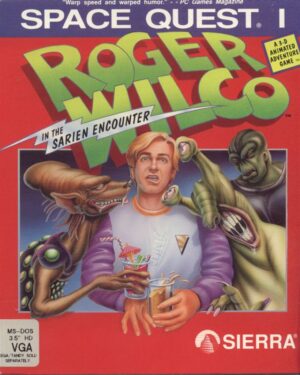Retro Replay Review
Gameplay
The Forbidden City: Beyond Space and Time places you at the heart of a living museum, turning the sprawling Qing dynasty palace into an interactive playground. Movement relies on straightforward keys and mouse controls, allowing both newcomers and seasoned gamers to stroll through the Meridian Gate, wander the Hall of Supreme Harmony, and roam the secluded Imperial Garden with minimal learning curve. A sidebar offers quick access to basic functions, meaning you can focus on discovery rather than buried menus.
(HEY YOU!! We hope you enjoy! We try not to run ads. So basically, this is a very expensive hobby running this site. Please consider joining us for updates, forums, and more. Network w/ us to make some cash or friends while retro gaming, and you can win some free retro games for posting. Okay, carry on 👍)
One of the game’s standout features is its flexible approach to exploration. You can freely chart your own path through courtyards and corridors, or enlist AI attendants and tour guides who will pepper your journey with historical insights. For players craving social interaction, MMO mechanics let you cross paths with others in real time. You might bump into a friend posing for a photograph, team up with an experienced guide to lead a private tour, or simply watch strangers enact daily routines at court.
Beyond pure sightseeing, Beyond Space and Time peppers in light activities that reflect Qing dynasty pastimes: cricket fighting, target practice in archery, and the strategic board game Weiqi. These mini-games are optional diversions that add a playful layer to an otherwise serene experience. Between events, you can zoom in on ornate roof tiles, jot notes in a virtual scrapbook, or snap in-game photos to share with friends, reinforcing a sense of personal engagement without overwhelming you with complex mechanics.
Graphics
Visually, the game’s 3D rendering of the Forbidden City is its crowning achievement. Every column, painted beam, and carved dragon reflects painstaking research conducted in partnership with the Palace Museum and IBM. High-resolution textures bring the imperial halls to life, while accurate color palettes capture the vibrant reds, greens, and golds associated with Qing-era architecture.
Lighting and weather effects enhance immersion as you wander beneath open skies or step into shaded pavilions. Sunlight filters through lattice windows, and realistic shadows cling to carved stone stairways. Although the game world feels boundless, performance remains smooth on a wide range of systems, thanks to thoughtful optimization that preserves detail without sacrificing frame rates.
AI characters, while mostly static, are dressed in period-appropriate garments that flutter softly as they stand guard or mingle in the palace’s central courtyards. During key moments—such as an evening banquet with the emperor or the approval of painted memorials—dynamic animations underscore the cultural rituals at play. These scenes serve as visual highlights, reminding you that this isn’t just a textbook reproduction, but an evocative digital stage where history breathes.
Story
Though not driven by a traditional narrative arc, The Forbidden City: Beyond Space and Time weaves a tapestry of historical episodes and cultural vignettes. Each tour guide offers its own perspective, whether you’re exploring the significance of dragon motifs or learning how feng shui shaped imperial architecture. These guided segments layer context onto your wanderings, connecting bricks and roofs to broader themes of power, spirituality, and artistry.
As you progress, curiosity leads you from the Hall of Mental Cultivation’s council chambers to the serene beauty of the Palace of Tranquil Longevity. Each location unfolds its own mini-story: the politics behind an ornate courtyard, the symbolism carved into a marble balustrade, or the daily routines of palace eunuchs and attendants. Optional side activities—like watching a court painter at work—blend documentary insight with in-game spectacle.
Personal engagement deepens through scrapbooks and photography tools, which invite you to record anecdotes, jot observations, and assemble your own narrative journal. In doing so, you become both historian and protagonist, stitching together disparate elements of imperial life into a coherent and personally meaningful tale.
Overall Experience
The Forbidden City: Beyond Space and Time excels as an educational simulation, offering a serene yet richly detailed window into Qing dynasty life. Its blend of free exploration, guided tours, and light MMO social features creates a unique hybrid experience—part museum exhibit, part social hub, part casual game. Whether you’re a history buff, a teacher seeking immersive content, or simply a curious traveler, this title delivers depth without intimidation.
That said, its interactivity remains limited to walking, chatting, photographing, and a handful of mini-games. If you’re expecting action-oriented quests or deep character progression, you may find the pace deliberate. However, those who relish slow discovery and cultural context will appreciate the game’s measured approach, where each corridor hides another story and every tile holds centuries of meaning.
In sum, Beyond Space and Time stands out as a model for how games can educate through immersion. Its partnership with the Palace Museum and IBM lends it authenticity, while its accessible controls and social features broaden its appeal. For potential buyers seeking an enriching digital excursion through one of the world’s most iconic landmarks, this journey to the Forbidden City is hard to beat.
 Retro Replay Retro Replay gaming reviews, news, emulation, geek stuff and more!
Retro Replay Retro Replay gaming reviews, news, emulation, geek stuff and more!









Reviews
There are no reviews yet.